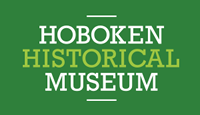Primary Source Materials

Educators can utilize the Museum’s rich collection of images, documents and photographs to teach primary source research skills in the classroom through artifacts from local history. The following resources include downloadable images, guided questions for inquiry and historical information on each source.
Oelrich’s ticket
This form was used to order passage for an individual or groups on the North German Lloyd Steamship Company, which sailed from the Bremen Pier, Hoboken, N.J. as is printed on it. The text is in English except for instructions at the left which are in German and English: ”This ticket must be exchanged at the Office, No. 2, Bowling Green” and ”Steerage passengers may do so on the wharf, but on day of sailing only, and as early as possible.”

Click above to view a larger image
Oelrichs & Company was founded in 1798 and operated under various names through the years. It seems to have been in operation as late as World War I. Date of ticket is circa 1870-1885.
Document analysis questions for students: Who created this document? Who might have used a document like this one? How can we find out more about the steamship company and its passengers? What other sources can you go to in order to find out more about cross-Atlantic travel by steamer in the late 19th century? Imagine that you are a passenger on the North German Lloyd Steamship in 1880; fill out the Ticket for Passage and write a journal account of your daily experiences.
Map of Hoboken Shore Railroad 1956
Map of Hoboken showing connections to the Hoboken Shore Railroad. Drawn by Joseph Novellino, 1956. This is a Hand-drawn map with all streets and detail of railroads, piers, waterfront businesses. The Shore Railroad office address is given as 1419 Bloomfield St. The map was prepared by Pyramid Engineering and Contracting Corp., 312 Maple Ave., Glen Rock, N.J. 1956.

Click above to view a larger image
Document analysis questions for students: What is the business office address for the Hoboken Shore Railroad Company? Locate this address on the map. Compare the waterfront of 1956 Hoboken with the waterfront today; what differences do you notice on the map? Read the map for landmarks and businesses; how are these the same or different from Hoboken today? How can you find out which businesses occupied and/or utilized each of the piers in 1956? Where are those businesses today?
Maxwell House advertisement
Maxwell House Coffee operated a factory in Hoboken when this ad was published. The Hoboken factory was one of four U.S. plants operated by its owner, General Foods Corp., and was at the time the largest coffee processing plant in the world. The ad does not mention Hoboken.

Click above to view a larger image
This ad appeared in The Saturday Evening Post on September 22, 1945. The ad promoted a radio show that Maxwell House sponsored in this period, called ”Maxwell House Coffee Time” starring George Burns and Gracie Allen (premiered Sept. 20, 1945). A glass jar of Maxwell House ground coffee is depicted. The show’s stars are seen (as drawn by an artist) arriving at the NBC studios by parachute and, of course, drinking coffee while doing so.
Document analysis questions for students: Advertisements can tell us a lot about popular culture during the time they were created and displayed. Who were George Burns and Gracie Allen and why were they popular? Why might Maxwell House have used these celebrities in their ad for coffee? What is the ad trying to do and who is the intended audience? What strategies are used in this ad to sell the product? Compare this ad to some ads from today; how are they similar or different?
Letter from Hoboken Mayor 1899
This is a digital image of a letter from Mayor Lawrence Fagan to the City Council regarding waterfront property at Hudson Square, 4th Street. The letter is dated June 14, 1899. The document is written on City Clerk letterhead, not Mayoral letterhead. The original document originates from the files of City Clerk, City of Hoboken, 1899.

Click above to view a larger image
Document analysis questions for students: This letter, written by Hoboken Mayor Fagan, was written in 1899 on City Clerk letterhead…interesting! Why do you think that is; why didn’t the Mayor write the letter on his own letterhead? What more can you find out about Mayor Fagan? What was the ordinance that the Mayor was referring to? Did the City Council pass the requested ordinance regarding the waterfront property at Fourth Street or not? How can you find out?

